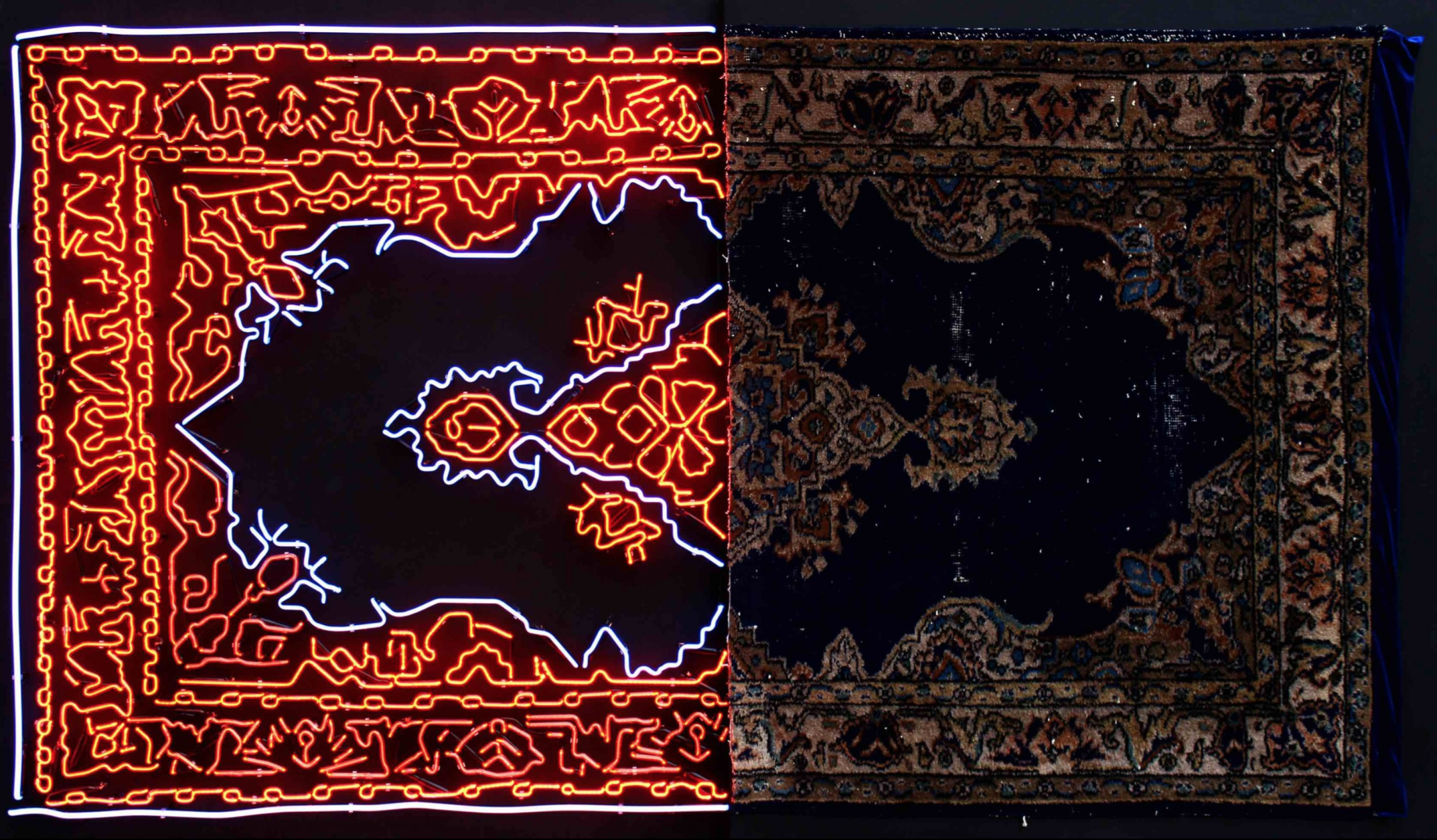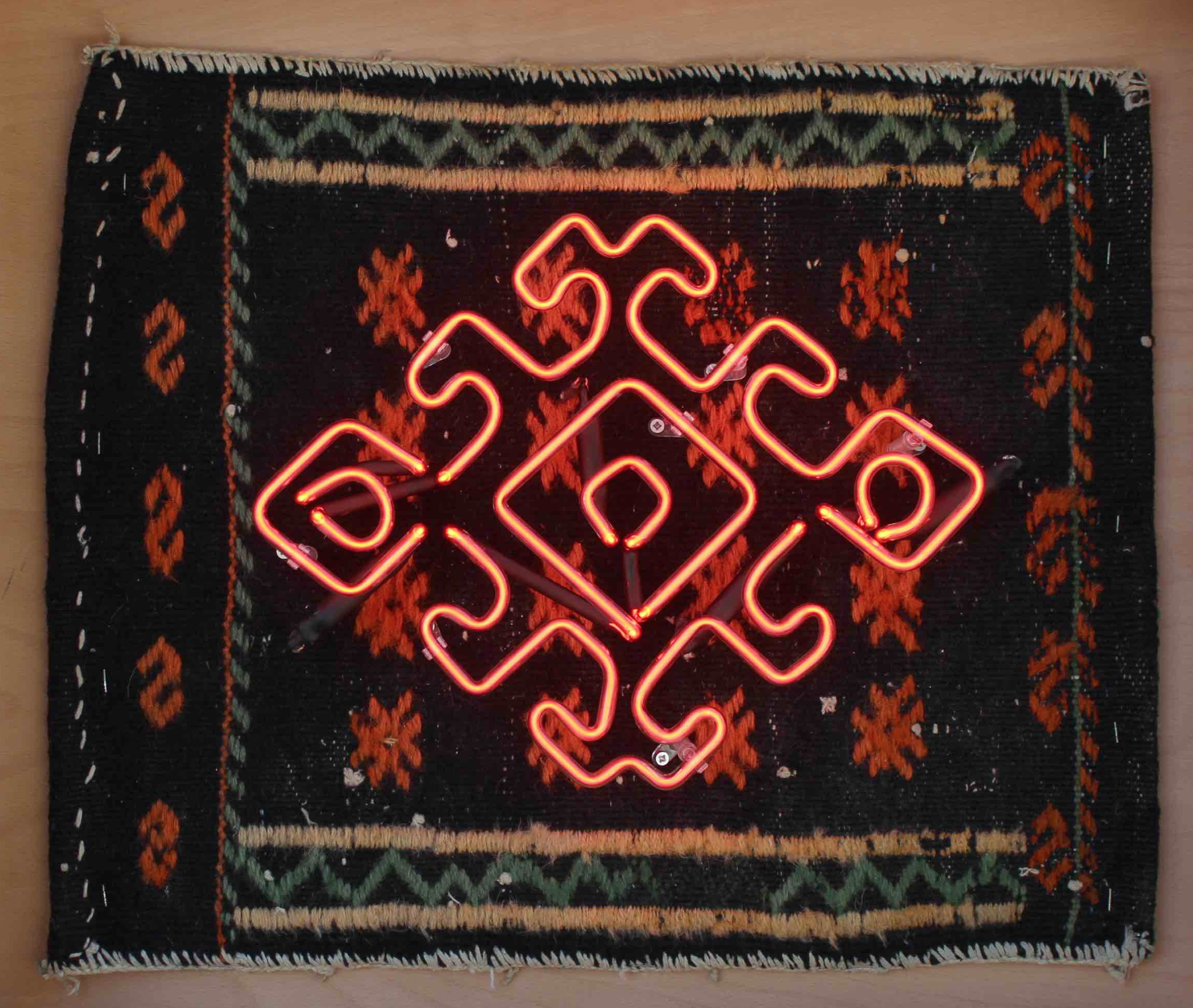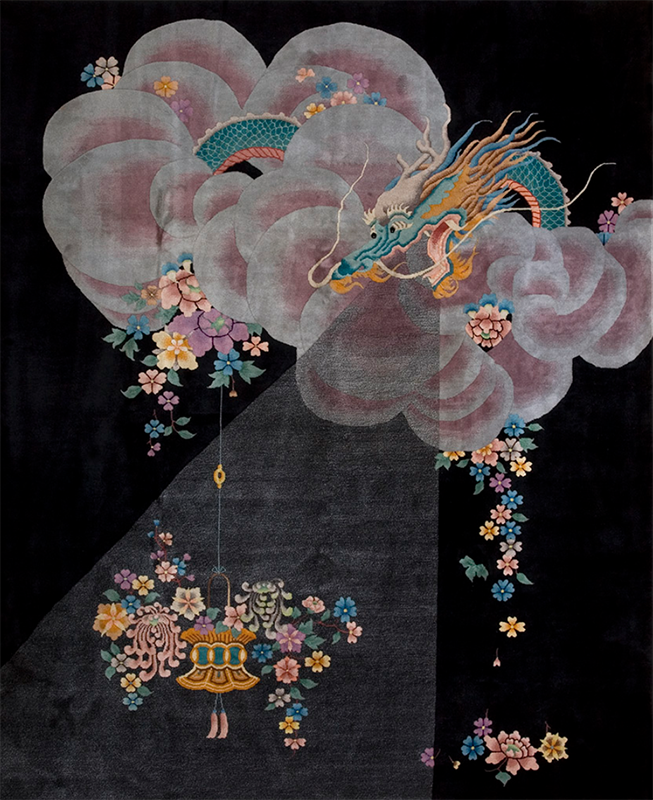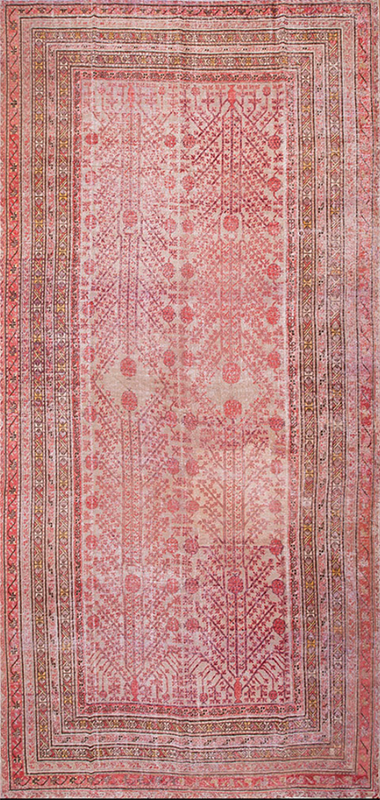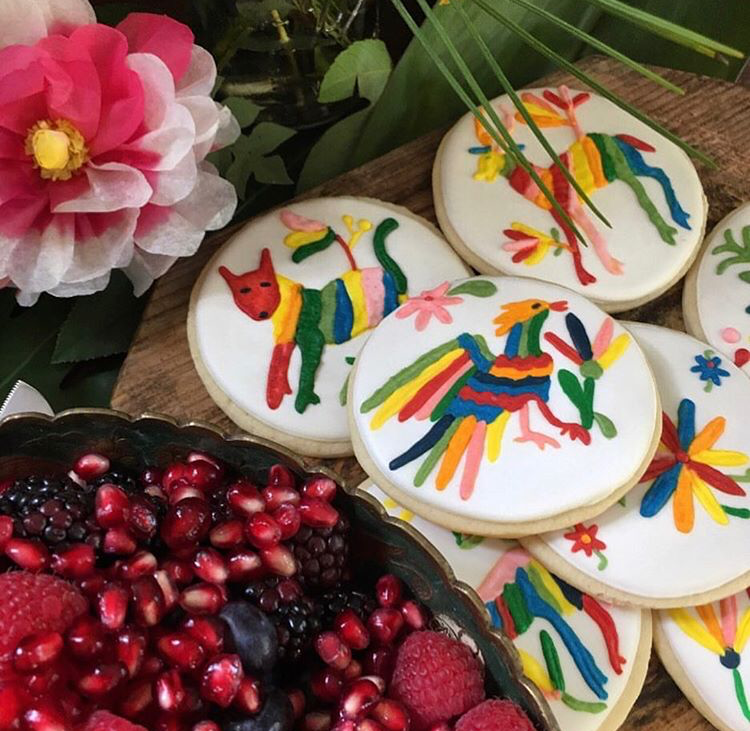It’s no secret that we love working with the spectacular Ryan Lawson, and we’re especially thrilled to see his inspired visions in an exhibition called CELEBRATING MASTERWORKS, in which Ryan uses some of our vintage and antique carpets to help build narratives around the furniture.
With Ryan’s eclectic touch, he pulls from the incredible collections of Dobrinka Salzman and Diner Gallery to curate the best of the best works by a number of artists.
Here an early 20th Century Donegal Arts & Crafts Carpet Designed by Gavin Morton brings an intense warmth that offsets the wall color perfectly.
The “Turkey red” Oushak based design eschews borders, and the whole effect is that of a centered, but not overtly medallion, layout. The color palette is narrow, including red, cream and black. One could see it as a Turkish village yastik (cushion cover) blown up to vast room-size. The weave is quite coarse and the carpets were intended for a middle class clientele, going with wallpaper, furnishings and accessories. They were marketed primarily through Liberty of London. The carpets in this design, as most of Donegals were, came in various colorways, and there are examples with cream and dark blue grounds.
Unlike Oushaks which were produced in quantity, Donegal carpets were woven in smaller numbers and have always been relatively uncommon.
Stock ID 24303
Irish Donegal
11’4” x 16’8”
circa 1900
https://antiquerugstudio.com/donegal-arts-crafts/24303




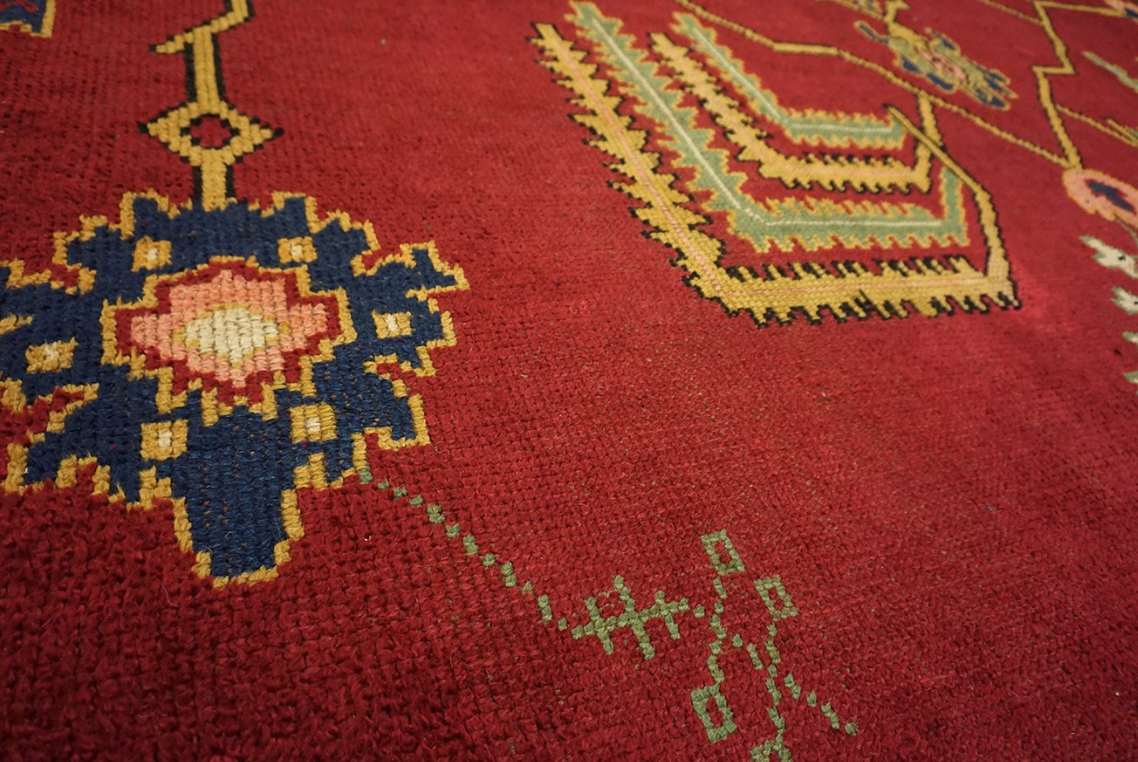



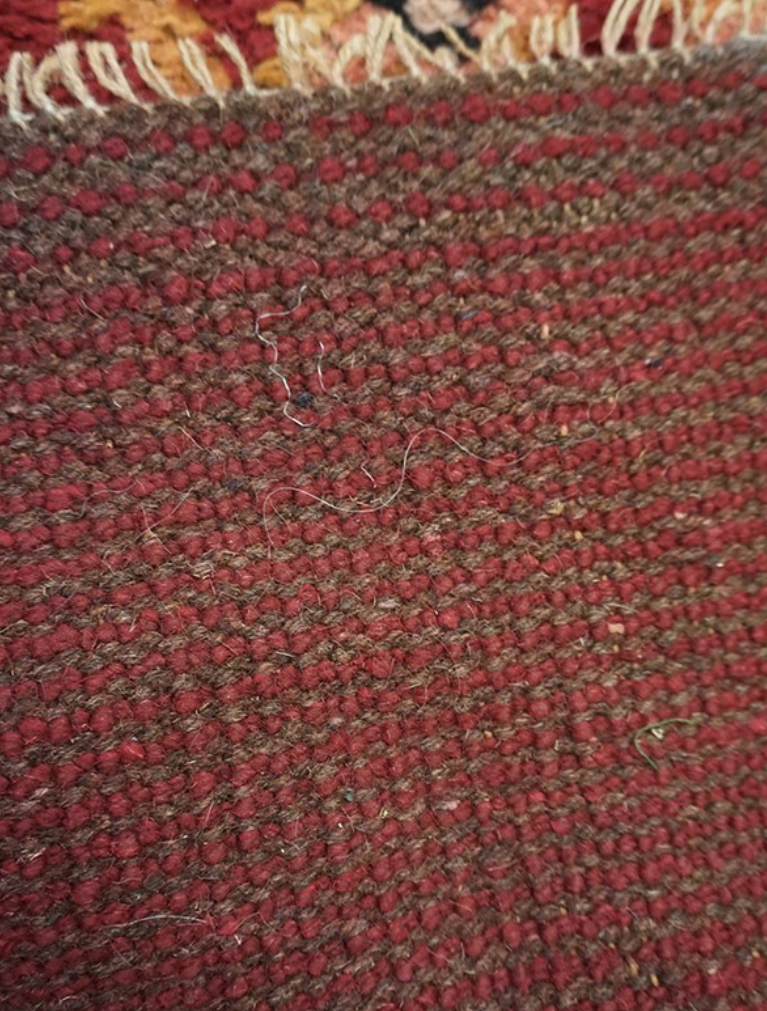
In this ensemble a 1950s Swedish Rya grounds the space with its modern rendition of pictorial tradition that is more than two centuries old.
The relatively shaggy pile is arranged in an oval ecru lattice creating pumpkin yellow – orange reserves, forming a background for stick figures of peasants wielding pitchforks, baskets, staves and slings for seeding. Some could be construed as ancient military figures with shields.
The pictorial tradition in Scandinavian Rya and Rollakan pile and flat-weave, rugs and carpets is more than two centuries old, and in fact probably had an origin back in Mediaeval times.
Stock ID 19728
Swedish Rya
6’6” x 9’9”
circa 1950
https://antiquerugstudio.com/rya/19728









The open light rose field of this 1930s Austrian Art Nouveau Vienna Werkstätte carpet is bounded by a narrow stripe of alternating squares and rectangles. The general effect is minimal yet colorful. The carpet does not have a design in competition with the art and other furnishings, but it easily holds its own in any context.
Stock ID 19280
Austrian Art Deco
9’4” x 13’6”
circa 1930
https://antiquerugstudio.com/art-deco-european/19280






This space features a mid 20th century Ecuadorian carpet designed by Olga Fisch which is an abstracted and minimalist design in neutral tones – inspired by the Nazca Lines of Peru.
The “Nazca Lines” are ancient Peruvian, but they have inspired the drawing on this Moderne New World carpet. The vast majority of Ecuadorian carpets display active, schematic human figures and animals, generally in dark tones contrasting with cream, borderless grounds. This is the only known carpet by this designer executed in a totally abstract, minimalist manner.
Stock ID 24599
Ecuadorian
12’4” x 17’3”
circa 1960
https://antiquerugstudio.com/ecuadorian-/24599



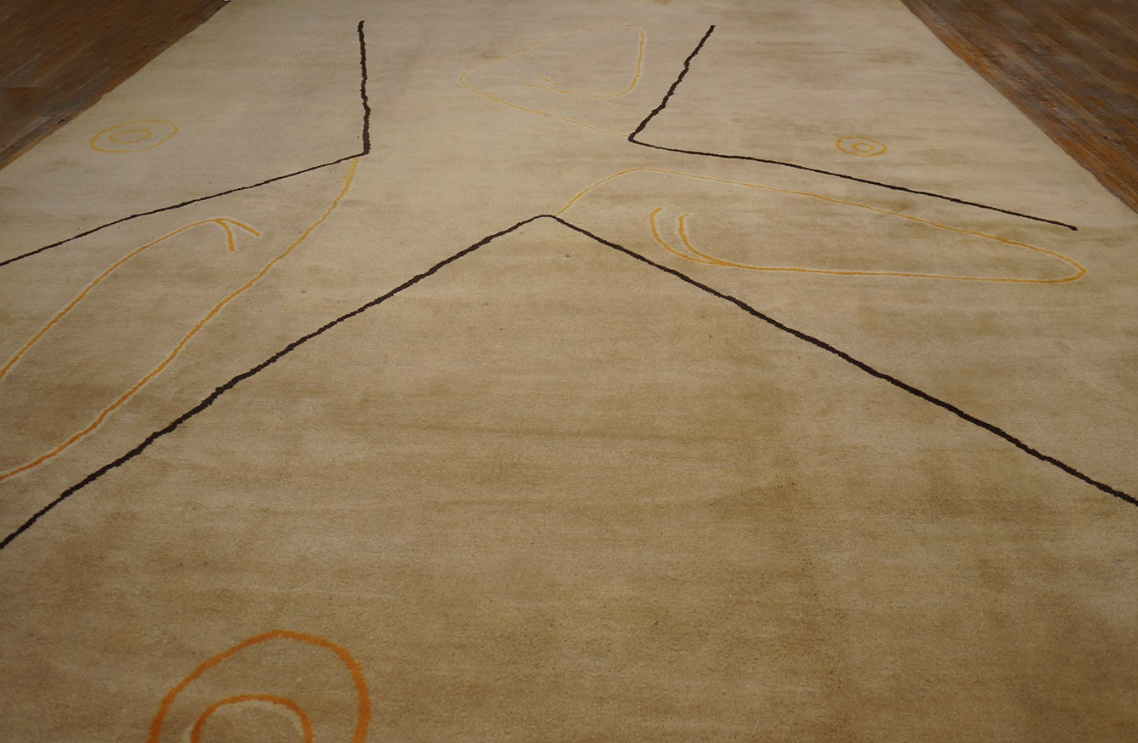





We hope you’ve been inspired by these lovely and eclectic views, and will contact us when you’re ready to act on your inspiration.


























